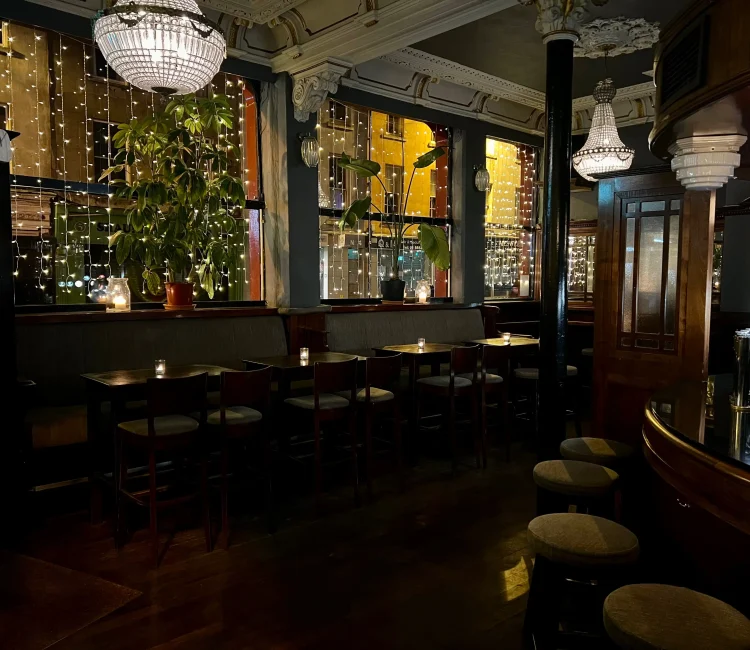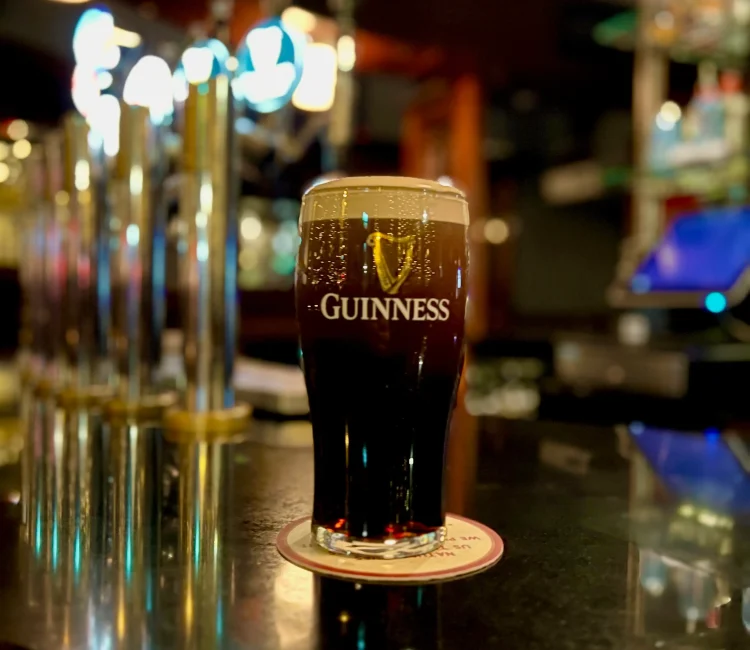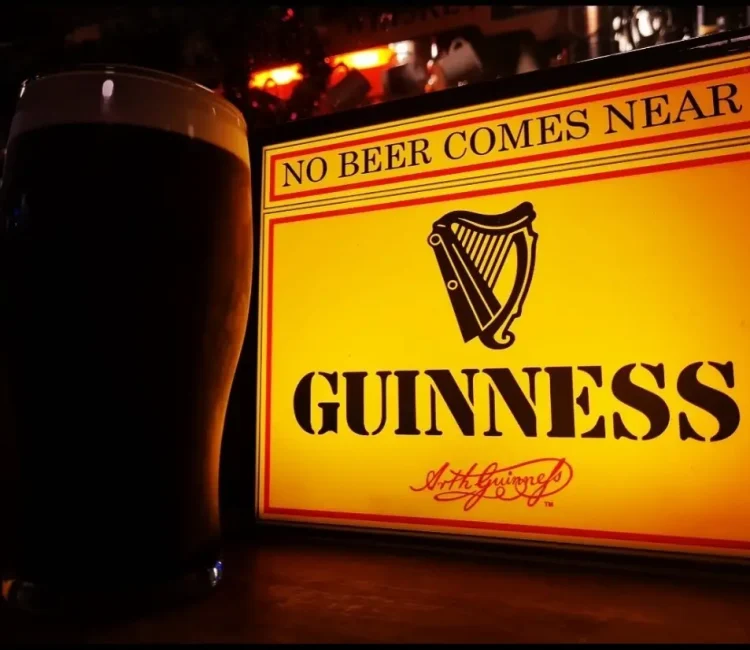Jack Nealons
165 Capel Street
Welcome to Jack Nealon’s
Where we pride ourselves on a warm welcome and embracing the spirit and vibrancy of Capel Street in a comfortable setting.
Open seven days a week, so why not drop in and try something from our extensive drinks menu!

History
Background
This famous Dublin street, which was named in honour of Arthur Capell, 1st Earl of Essex, was in the 18th century the main access route to the old city centre around Dublin Castle. Prior to this, Capel Street was part of the gigantic Sir Humphrey Jervis Estate and was laid out primarily as an aristocratic and ascendancy residential zone of large mansions complete with gardens and courtyards.
It was during the 19th century that Capel Street took on its current
commercial appearance when shopfronts simply replaced front doors. But,
most importantly, Esssex Bridge was the most easterly bridge on the Liffey
and the gateway to Parliament Street and the south city. Location has
always been central to the economic evolution of Dublin and Capel Street
set the standard in this regard because of its proximity to City Hall and
Dublin Castle.
Through the centuries, Capel Street has enjoyed a prodigous association
with Dublin’s social world through its inns, clubs, ale houses and taverns.
And in ages past casks of wine and spirits were transported to Capel Street
primarily by barge along the River Liffey.
The Arrival of the Green Family 1815
By the dawn of the 19th century new shopfronts were sprouting up along
the street and in 1815 this house, then nos. 161-162, opened its doors to
the Dublin public as a grocery store. The proprietor was respected business
and family man, Timothy Green, who had previously traded off Grafton
Street. Grocers were allowed to sell spirits in an off-sales capacity in those
days but many grocers were in fact flouting the law by erecting screens
within their premises and allowing the public to consume spirits hiddenbehind those screens. This practice caused consternation and bitter fueds
to develop between publicans and grocers and also with the authorities,
both in Dublin and Westminster. This practice of ‘dram drinking’ as it was
known was described in a House of Commons Public Inquiry by publican
Charles Kennedy as follows, ‘the evils of dram drinking amounted to public
disorder, crime and domestic strife.’ Daniel O’ Connell, the Liberator, who
himself owned both a distillery and a brewery, countered by stating, ‘all
these issues and that of debauchery emanated from Public Houses and not
Grocers’ Shops.’
Timothy Green Threads a Middle Ground
But while proprietor Timothy Green was happy to legitimately dispense
spirits and wines, his main tenet of business was in supplying grocery
provisions to the remaining mansions of Capel Street and their equivalents
on the other side of Essex Bridge. Timothy was therefore a respected man
in the community who avoided the pitfalls of his fellow spirit grocers.
By 1825 Timothy Green had passed the family busines to his son Patrick,
who had worked by his side through the decades. By 1827 nos. 161-162
Capel Street was trading as a wine and spirit grocery store but also as a
licensed premises to dispense liquor on the premises. At this stage, the
modern commercial shape of Capel Street was beginning to emerge but the
provisions market remained the Green family’s most profitable source of
income.
The Third Generation Takes the Reins in a Changing Dublin
By the 1840s, Timothy Green, son of Patrick and grandson of Timothy Snr.,
was manning the pumps and dispensing cases of Claret and Burgundy to his
aflluent customer base. The winds of change were now blowing loudly in
Dublin as the old world was rapidly giving way to the new. The age of
locomation and the railways had arrived and Capel Street and its environs
were huge beneficiaries. Kingsbridge (Heuston) Station was launched to a
fanfare of acclaim in August 1846 as the terminus of the Great Southern
and Western Railways. Despite the raging famine in rural Irleland, the
railways trigged an economic boom within the capital in the years that
followed. This was now the era of modern travel, necessitating a huge
demand for lodgings, food, beverages and consumer goods about the citycentre. All of this was music to the ears of Timothy Green, who travelled to
and fro each day from his well-to-do residence at Greenmount, Clonsilla,
only to see his wine and spirits business prosper further.
Margaret Green To John O’ Connor 1867
Timothy Green passed away in 1865, fifty years after his family had taken
occupancy of this premises courtesy of a lease from the Headfort Estate.
The premises was now in the hands of his widow Margaret Green, who had
little experience of running a busy day-to-day business. However, Margaret
held on here for two years before selling to businessman and publican,
John O’Connor.
John O’Connor and His Master Plan
John O’ Connor was a very untypical Dublin publican of this era in the sense
that he was a born visionary, a man who was fearless and unrelenting in his
passion to think big and bold irrespective of the cost involved. His first
major decision on taking possession of this prime location in 1867 was to
engage the services of leading architect, Charles Geoghegan, and
commission a total reconstruction of 165-166 Capel Street. The new edifice
– which you see before you today – was a masterpiece of construction and
period design attaining acclaim in the architectural annals of Ireland. The
records state, ‘ this building, erected in 1867 by Charles Geoghegan for the
wine and spirit merchant John O’Connor, forms an important element in the
built heritage of Dublin. The upper floors are enlivened by colourful ceramic
details while the well-executed carving and moulding to the shopfront add
further aesthetic interest.’
John O’Connor Expands Further
On completion of this magnificent creation John O’ Connor had the world
at this feet. Each day he travelled by train to Westland Row from his home
in Gresham Terrace, Kingstown. And within months of completing the
reconstruction, John O’Connor’s annual R.V. (rateable valuation) had
trebled from 40 guineas to 120 guineas. But O’ Connor was moving ahead
rapidly, unrelenting in his ambition of becoming the largest spirit and wine
wholesaler in Dublin’s north city. To achieve this goal and also provide an
unrivalled retail pub trade, he bought up properties nos. 19, 20 and 22Little Strand Street. Simultaneously, he ran a thriving pubtrade at nos. 27-
28 Winetavern Street.
Collapse of the O’Connor Dream
It appears that John O’ Connor financially bit off more than he could chew
for by 1874 his empire had collapsed. He sold off his three properties in
Little Strand Street to pay his debts and this premises passed to publican
Michael Moore.
Musical Chairs
Michael Moore took up occupancy here in 1874 just as the former Essex
Bridge had been widened, remodelled and renamed in honour of Henry
Grattan, former leader of the old Irish Parliament on College Green. But
Moore’s tenure here was of short duration for the premises changed hands
three times within five years, firstly to James Vincent White in 1877, who
was replaced two years later in 1879 by Patrick Rourke, Wine & Spirit
Merchant.
The Return of John O’Connor
By 1884 the great entrepreneur, John O’Connor, had returned with his
passion and drive undiminished. In the intervening years, O’ Connor’s life
was no less colourful for he was deeply involved in licensed trade politics,
frequently travelling to Westminster to lobby for licensed trade reforms
and appearing before various licensing committees and enquiries. He was
also an active participant in national politics with a high profile within local
government as a member of the Irish Parliamentary Party.
O’ Connor to W.J. Mitchell
John O’ Connor passed away in 1891, the same year as his great political
hero, Charles Stewart Parnell. The new man behind the pumps here in
Capel Street was William J. Mitchell, a member of a family with a
distinguished history of grocery on Sandymount Green. During these years
the interior of the pub was laid out in the manner of a Victorian pub
grocery with two separate entrances, one for alcohol consumption and the
other for the Victorian ladies to buy groceries, especially tea. In those years
the Victorian citizenry bought the majority of their grocery needs from
provisions stores (former day supermarkets) but they invariably boughttheir teas from Victorian pubs. The Victorian pubs stored their teas in lead
lined bins which they made from the off-cuts of the mahogany used on
their counters and backbars. In stark contrast, the tea in provisions stores
was held in thin plywood tea chests, which deteriorated in quality in cold
and damp climatic conditions.
William J. Mitchell’s occupancy of this house was a successful one for he
effortlessly blended the two great components of the late Victorian age,
grocery and drink sales while continuing to retail quantities of wines and
spirits.
W. J. Mitchell to Joseph P. Reynolds – 1902
Joseph P. Reynolds, Tea, Wine & Spirit Merchant, began pulling the pints
here in 1902 and later executing an Edwardian interior refurbishment of
the Victorian pub. This pub wasn’t mentioned by James Joyce in Ulysses but
he does refer to Capel Street in his short story, Two Gallants. Reynolds
traded here for five years before selling to respected operators, Clarke &
Heerey in 1907.
Clarke & Heerey and the Easter Rising
By 1907 the long established partnership of Clarke and Heerey had taken
possession of this old hostelry and began the task of sailing this ship into
gentle waters. These were boom times for the Dublin licensed trade as a
new spirit of adventure coupled with increased employment and more
disposable income heralded generous dividends. Most importantly, this
was a period of low inflation for publicans accompanied by few price
increases from the suppliers.
The good ship Clarke & Heerey, which sailed merrily along throughout the
quiet Easter weekend of 1916, suddenly ran aground on Easter Monday
April 24th. The Easter Rising had begun. Capel Street was caught in the
middle between the insurgents who occcupied the GPO on one side and
the occupiers of the Four Courts on the other. This battle raged all week. At
precisely 16.40hrs on Thursday April 27th the Sherwood Foresters stormed
Capel Street Bridge (Grattan) and cut the rebel forces in two. Making their
way up Capel Street, they emptied and then occupied each premises
including that of Clarke & Heerey. And while the Sherwood Foresters mayshown military discipline in battle, they showed no such discipline where
personal possessions were concerned, looting as they went. They caused
considerable cosmetic damage in Clarke & Heerey by ransacking the house.
Martial Law was declared by British General Maxwell which forced Dublin
public houses to remained closed for two weeks.
Following the Rising, publican Patrick Clarke made a claim to the Property
Losses Committee of £51- 18s – 4d securing a payout of £43-18s, which is
equivalent to €5,500 today. Young Michael Cunningham, an assistant at the
pub, who lived overhead on the third floor made a claim for £3 – 11s – 6d
because the Foresters had looted his clothes and belongings. He was paid
in full, some €450 in today’s money.
Clarke & Heerey to Vaughan Bros
The Irish War of Independence was in full swing when Vaughan Bros took
possession of this hostelry in 1920. And just as their predecessors had seen
military engagements in 1916, they too were in for a show like no other.
This was clearly not a pleasant place to be between June 28th – 30th 1922
at the outset of the Irish Civil War during the Siege of the Four Courts. The
Vaughan Bros were known sympathisers of the national struggle and it is
thought this may have been a safe house during the War of Independence.
Later Decades
The Vaughan Bros remained in charge of this liquid shrine of antiquity until
the stormclouds of war were evident in 1939. They were replaced by the
O’Connor Bros, who in turn were replaced by John J. Kerwick, later again
Mrs. Hill and Murphy & McGovern in the late 1950s. The rateable valuation
was then 145 Guineas, a factor that was inordinately helped by the
presence of Kilmartin Bookmakers next door.
The Kingsway Bar
Publican James Nolan secured this premises in the mid 60s and remodelled
it into a contemporary Lounge Bar, the social love child of the 60s. He
renamed it the Kingsway Bar. Any vestige of grocery was now a distant
memory. The premises reappeared on the market again in 1977 and was
renamed the Earl Grattan, and later still the Grattan.Imbibers of the 20th century came to know and love this oasis of longevity
as Jack Nealon’s in honour of a former charismatic publican from Skerries,
Co. Dublin. This house has been in the current ownership since 2018 and is
undergoing a tasteful transformation in style, quality, service and offering
of product.
The echoes of a vibrant past reverberate around this social repository of
culture and heritage paving the way for a bright and successful future. And
the future promises to be a culturally enriching as that historic past.
© Eamonn Casey
Licensed Trade Historian
Email: eamonncasey1@g

Opening Hours
4pm – 11.30pm, Monday – Thursday
3pm – 12.30am, Friday
1pm – 12.30am, Saturday
1pm – 11pm, Sunday

Drinks Menu
We have put together a selection of old favourites, new loves and a couple of adventurous unknowns for you to choose from. From the most popular beers, to our collections of whiskeys and gins we are bound to have something to quench your thirst!
View Menus

